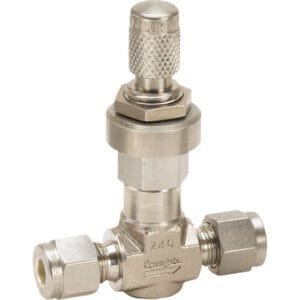ASA HV Reducer Full Nipples (Grooved Flanges): Adaptable Connections for High Vacuum Line Transitions
The ASA HV Reducer Full Nipples (Grooved Flanges) offered by TFM are purpose-built to connect ASA flanges of different sizes in high vacuum (HV) environments, while maintaining robust, vacuum-tight performance. Manufactured from 304L stainless steel tubing, these reducer nipples feature two grooved ASA flanges, each engineered to accommodate elastomeric o-rings for secure sealing under vacuum.
Unlike standard full nipples, the reducer version is specifically designed to bridge two dissimilar nominal flange sizes, providing a straightforward solution for modifying or expanding vacuum pipelines without major structural changes. The dual grooved ends offer greater sealing uniformity and are ideal where both connected components require o-ring retention.
Key Features of ASA HV Reducer Full Nipples (Grooved Flanges):
Dual Grooved ASA Flanges
Both ends of the nipple are equipped with grooved flanges to support o-ring-based sealing, allowing easy integration into ASA flange systems with vacuum-safe joints.Reducer Design for Multi-Size Connections
Facilitates a secure transition between two different ASA flange diameters, enhancing system compatibility and flexibility during retrofits or new construction.304L Stainless Steel Construction
Known for its corrosion resistance and mechanical strength, this material is ideal for demanding HV setups, including those involving reactive gases or high bake-out temperatures.High Vacuum Performance
When paired with suitable o-rings and bolts, these nipples support vacuum levels down to approximately 10⁻⁷ torr, making them suitable for a wide range of research and industrial systems.Customization Support
TFM provides standard lengths and tube diameters, but can also custom-fabricate reducer full nipples to meet your unique specifications—ideal for non-standard vacuum ports or system geometries.
Typical Applications:
Transitioning between mismatched ASA flange sizes in vacuum chambers or pump lines
Integration into foreline systems, manifolds, or HV distribution networks
Adapting legacy systems to newer components without extensive retrofitting
Vacuum system builds in thin-film coating, analytical instrumentation, or plasma research
TFM offers a complete range of ASA HV nipples, including half and full styles, grooved or flat variants, and reducer formats—each precision-built for demanding vacuum system requirements.





Reviews
There are no reviews yet.